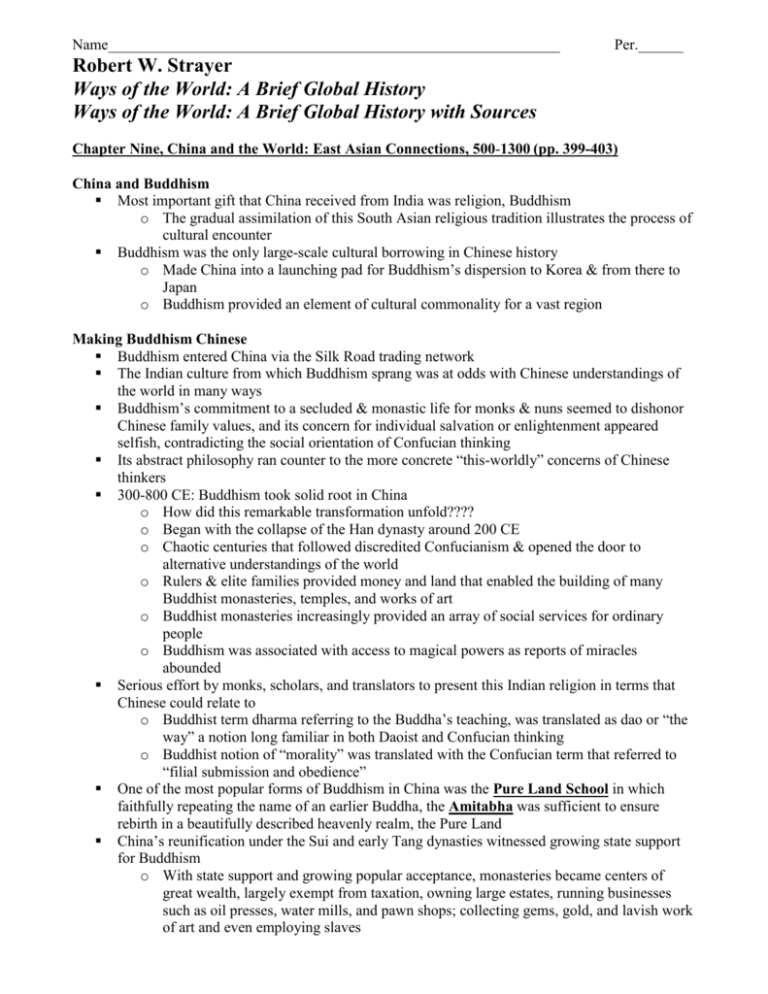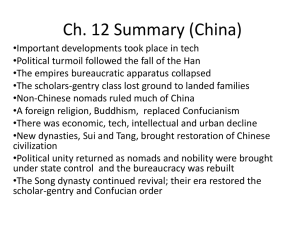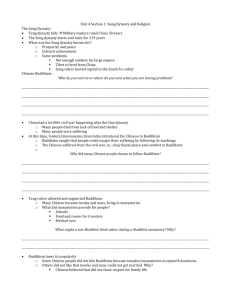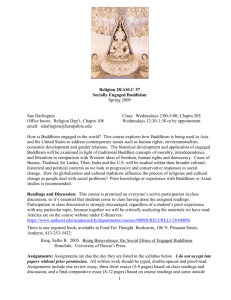File - Mr. Neadel`s AP World History
advertisement

Name____________________________________________________________ Per.______ Robert W. Strayer Ways of the World: A Brief Global History Ways of the World: A Brief Global History with Sources Chapter Nine, China and the World: East Asian Connections, 500-1300 (pp. 399-403) China and Buddhism Most important gift that China received from India was religion, Buddhism o The gradual assimilation of this South Asian religious tradition illustrates the process of cultural encounter Buddhism was the only large-scale cultural borrowing in Chinese history o Made China into a launching pad for Buddhism’s dispersion to Korea & from there to Japan o Buddhism provided an element of cultural commonality for a vast region Making Buddhism Chinese Buddhism entered China via the Silk Road trading network The Indian culture from which Buddhism sprang was at odds with Chinese understandings of the world in many ways Buddhism’s commitment to a secluded & monastic life for monks & nuns seemed to dishonor Chinese family values, and its concern for individual salvation or enlightenment appeared selfish, contradicting the social orientation of Confucian thinking Its abstract philosophy ran counter to the more concrete “this-worldly” concerns of Chinese thinkers 300-800 CE: Buddhism took solid root in China o How did this remarkable transformation unfold???? o Began with the collapse of the Han dynasty around 200 CE o Chaotic centuries that followed discredited Confucianism & opened the door to alternative understandings of the world o Rulers & elite families provided money and land that enabled the building of many Buddhist monasteries, temples, and works of art o Buddhist monasteries increasingly provided an array of social services for ordinary people o Buddhism was associated with access to magical powers as reports of miracles abounded Serious effort by monks, scholars, and translators to present this Indian religion in terms that Chinese could relate to o Buddhist term dharma referring to the Buddha’s teaching, was translated as dao or “the way” a notion long familiar in both Daoist and Confucian thinking o Buddhist notion of “morality” was translated with the Confucian term that referred to “filial submission and obedience” One of the most popular forms of Buddhism in China was the Pure Land School in which faithfully repeating the name of an earlier Buddha, the Amitabha was sufficient to ensure rebirth in a beautifully described heavenly realm, the Pure Land China’s reunification under the Sui and early Tang dynasties witnessed growing state support for Buddhism o With state support and growing popular acceptance, monasteries became centers of great wealth, largely exempt from taxation, owning large estates, running businesses such as oil presses, water mills, and pawn shops; collecting gems, gold, and lavish work of art and even employing slaves Losing State Support: The Crisis of Chinese Buddhism The impressive growth of Chinese Buddhism was accompanied by a persistent undercurrent of resistance and criticism o Some saw Buddhist establishment as challenge to imperial authority o More important was a deepening resentment of its enormous wealth o Buddhism was clearly of foreign origin and offensive for that reason to some Confucian & Daoist thinkers The turning point may well have been the An Lushan rebellion (755-763) in which a general of foreign origin led a major revolt against the Tang Dynasty Several decades later, the Chinese state took direct action against the Buddhist establishment as well as against other foreign religions Despite this persecution, Buddhism did not vanish from China o Its philosophical ideas played a role in the reformulation of Confucian thinking that took place during the Song Dynasty o Buddhism became one element of Chinese popular religion Buddhism in China became assimilated in Chinese culture alongside its other traditions










